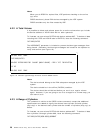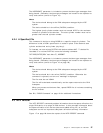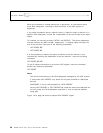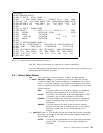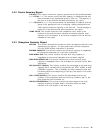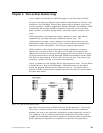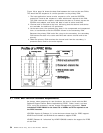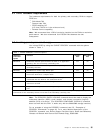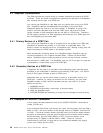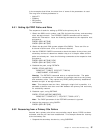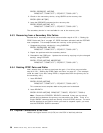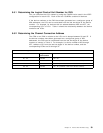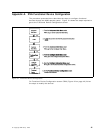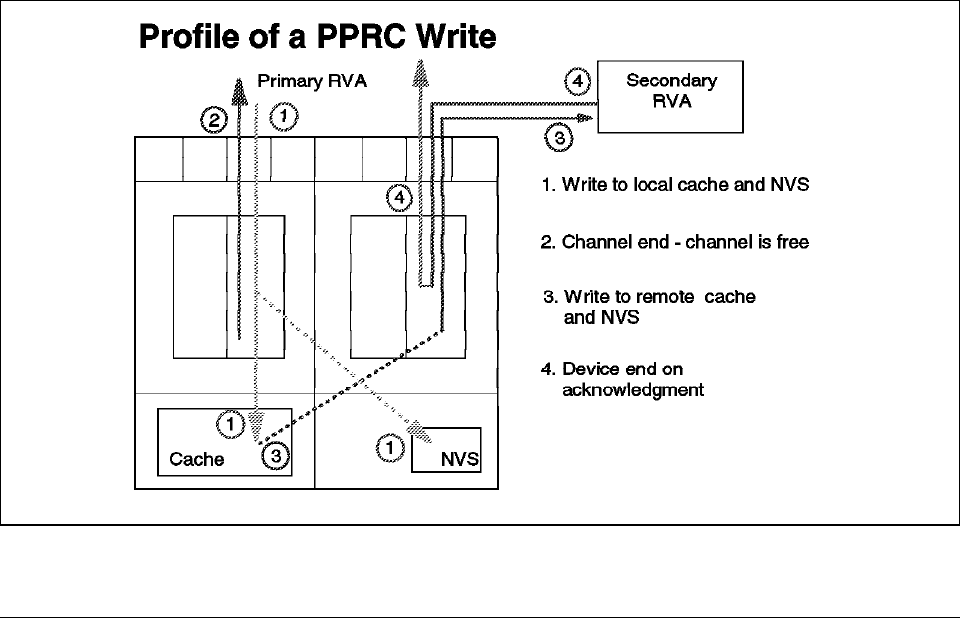
Figure 20 on page 34 shows the data flow between the host and the two RVAs.
This would be the sequence of a write operation to the primary RVA:
1. The host application issues a write request to a file, and the VSE/ESA
supervisor converts the request to a start subchannel request to the RVA.
The RVA receives the request, compresses the data as it comes across the
ESCON host adapter, and stores the data in both its cache and NVS.
2. Channel end is returned to the host, indicating that the channel and device
are available for additional I/O operations.
3. At the same time, the updated array data, in its compressed and compacted
form, is transferred across the ESCON channel to the secondary RVA.
Because the primary RVA looks like a host to the secondary, the secondary
RVA stores the data in its cache and NVS and returns channel end to the
primary.
4. When the primary RVA receives the channel end from the secondary, it
presents device end for the write request.
Figure 20. PPRC Data Flow
5.1 PPRC and VSE/ESA Software Requirements
As always, when preparing for new functions, be sure to check with the IBM
Software Support Center before implementing PPRC. Order, install, and test
PTFs, using the customer′s normal change management processes. Check
Information APAR II08303 for the latest list of APARs and PTFs required to use
the PPRC functions.
VSE/ESA Version 2 Release 3.1 is the minimum release level for PPRC support.
APAR fixes DY44407 and DY44616 are needed to support PPRC.
ICKDSF Release 16 ″refreshed″ by APAR PQ20390 contains the support for PPRC
on the RVA.
34 RAMAC Virtual Array, Peer-to Peer Remote VSE/ESA



